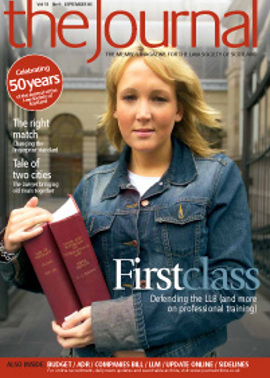Glitch hunt, not witch hunt

It is often said that people are an organisation’s most important asset (although many people prefer Dilbert’s viewpoint that, on reflection, an organisation’s most important asset is money). People can be an asset or a liability in terms of risk to the business as well as risk to the profitability of the business. The way people and their behaviours influence a firm’s culture and practices can be a much more important factor in claims causation and prevention than the firm’s documented systems and procedures.
Can you identify with any of the following?
Silo mentality
Where “colleagues”, ostensibly operating under the banner of a partnership are, in effect, running two or more separate business units, albeit with a shared accounting system. The firm’s partners share an office but not a culture.
Risk issues
- Lack of a single shared approach to risk
- Lack of a shared understanding of risk
- Lack of understanding of what is happening in other parts of business
- Increased risk of communication breakdowns
- Insufficient time devoted to management generally?
- Poor management generally – possible inefficiencies, duplication of effort etc?
Case study
Bakewell & Kipling dealt with commercial property work and had a number of longstanding clients who gave the firm a considerable amount of repeat business. Bakewell and Kipling had very different styles – Bakewell was a very aggressive negotiator and his clients loved his no-nonsense approach. Kipling was more conciliatory in approach but equally well regarded for his calm approach to getting the best deal for his clients. Unusually, both partners attended an external client care seminar together – they usually only met up once a month to discuss the firm’s finances. At the workshop, Bakewell made great play of his “added value” practice of reminding clients automatically about upcoming dates for exercising options, attending to rent reviews etc. Kipling was horrified to discover this had been going on for years. His understanding was that that the firm never provided this “reminder” service for clients as it increased the firm’s risk profile unacceptably. Bakewell’s response was that he’d never agreed any such thing and that Kipling was being over-cautious.
Consider:
- Is the way you practise creating unnecessary risk for your firm?
- Could risk be handled better in a more consistent, joined-up way?
Should we look at how we manage risk rather than how I manage it, since an adverse event may impact everyone?
Dabbling
The increasing complexity of law and practice makes it ever more challenging to operate as a general practitioner. While there is definitely much to be said for having an overview of a wide range of legal issues that may impact on a client, the limits to this ought to be apparent to every solicitor, depending on the experience they have attained. In many practices, being a “generalist” is a necessity – for instance, questions of geography and demographics of the practice’s catchment area may influence this. The most effective practitioners have a clear understanding of when risk becomes unacceptable.
Risk issues
- Increasing the practice’s risk exposure beyond what should be tolerable (and being unaware that this is happening)
- The potential of failure to deliver desired outcomes to clients is dramatically increased
- The risk of delay (a major cause of client dissatisfaction) is increased (as the individual is effectively training themselves in the course of handling the client’s case/transaction)
Case study
A medium sized firm commissioned a review of its risk management by an external risk consultant. The consultant reviewed the firm’s systems, procedures, manuals and documentation and conducted a series of interviews with key personnel in each department, including the firm’s support services, and with a random selection of fee earners across the firm. In one such interview, it emerged that a commercial property partner occasionally undertook executry administration “just for interest”. That was mentioned in the consultant’s report and it came as a complete surprise to most of the partners.
Action
- Practitioners ought to have a fairly clear idea of what is outwith their competency, whilst not becoming so risk-averse as to limit their professional development.
- In practices with multiple fee-earners, those supervising workloads should consider the type of work being assigned and whether the competencies exist within the practice to undertake the work without undue risk exposure.
- Practices may wish to consider indicating to all fee-earners any work types that the practice will not take on: e.g. personal injury litigation, crime etc, and how any enquiries should be referred onwards.
- The ability to check what classifications of work are being handled by individuals could flag situations like the one described in the case study.
Maverick partner
A single individual remains unconvinced of the benefits of certain of the firm’s systems/ procedures and refuses to adopt them. He condones members of his team disregarding those systems and procedures. In fact, he is suspected of encouraging non-compliance. This scenario can often be surprisingly difficult for firms to spot – because the individual concerned:
- has a specialism that no-one else feels confident in reviewing from a “systems” point of view;
- is a dominant force in the practice (either in terms of personality or fee income);
- is otherwise “eccentric” with the result that many idiosyncratic practices simply get “overlooked”.
Risk issues
- A single individual can have an adverse impact on the firm’s risk profile
- Lack of a harmonised approach to risk creates unnecessary risk exposures
- Absence of commitment at the top encourages others to become complacent about, or dismissive of, risk management
Case study
Whistler realises that his partner, Turner has signed up to the following term incorporated in a recent tender document:
“22.2 You shall take out and maintain professional indemnity insurance for the period of this appointment and for a subsequent six years following the termination of this Contract, said insurance being maintained for a minimum of 14m Euro with an insurance company of repute and without onerous conditions, exclusions or excesses.”
Whistler thinks this is a problematic clause for various reasons, not least of which is the expense of the additional insurance premiums for several years.
Action
Harmonising risk management systems is important and desirable. That doesn’t necessarily mean that every single process needs to be identical – an appropriate risk control for colleagues undertaking court work may be completely inappropriate to executry administration or commercial property work. However, that is an entirely different matter from allowing diverse unapproved systems to operate in tandem, e.g. when a partner joins from another firm and continues to do things the way he was used to in his former firm.
Denial
An individual (or the firm) refuses to acknowledge that a claim could have been prevented, or that a “near miss” did, in fact, occur and that the circumstances surrounding this ought to be worthy of investigation.
Risk issues
- Undermines risk management – if all claims are apparently “unpreventable” for various reasons, what is the point of trying to minimise the risk of these occurring?
- Increases the chances of underlying claim causes repeating
- Increases the chances of near-miss scenarios repeating, sometimes as claims
- Breeds increasing reliance on insurance as only risk control
- Insurers tend to be unimpressed by this attitude to claims – may lead to increased premiums
Case study
One of the partners has undertaken an investigation into the circumstances in which three personal injury claims being handled by one of the firm’s court assistants have time barred in quick succession. In one of these, the following issues were noted:
- Date of accident correctly identified and diarised
- Client incommunicado for period of months
- Client failed to provide instructions/information in spite of six reminder letters
- Client made claim through other solicitors after expiry of triennium
The partner reports back that this matter is one where no risk management system could have assisted. One of the other partners disagrees.
Issues
- In this situation, partners might need to be persuaded of the value of discussing/introducing preventive measures
- There are issues which require to be handled sensitively, such as: possible rebellion from individuals who are worried they might be “named and shamed” and the difficulty in criticising too robustly in a close working environment
Systems depend on individuals
An understanding of people and how their behaviours impact risk profile is critical to managing risk effectively in a professional firm. Although systems and procedures are a vital part of controlling risk, any system is dependent on individuals utilising it correctly to obtain the benefit. “People risks” are some of the hardest to manage in reality. Taking time out to consider what attitudes, behaviours and culture exist in your practice is a worthwhile step in beginning to manage such risks.
Notification of claims
All practices will soon be renewing their professional indemnity insurance cover.
Part of the process requires a declaration and notification to be made in respect of claims and “circumstances” that may give rise to a claim. Matters that have not previously been notified to insurers require to be reported at that time. Before signing the declaration, the responsible partner requires confirmation from colleagues about any new claims and “circumstance” matters.
Sometimes a discussion arises about whether or not a particular situation amounts to a claim or “circumstance”. This can be a matter of judgment; however, as a guide, your decision should not be influenced by your estimation of the prospects of successfully defending a claim or potential claim. Similarly, the fact that action may be taken to avoid, rectify or mitigate the loss or possible loss ought to be disregarded.
If in doubt about whether a particular situation constitutes a notifiable claim or “circumstance”, err on the side of caution – if in doubt, notify.
Prompt intimation is in the best interest of the practice, so do not wait until you are asked about claims and “circumstances” as part of the preparation for renewal. Flag these matters up to the partner or other person who has this responsibility.
Remember – we are all capable of making mistakes; what is less easily forgiven is someone failing to flag up a problem that leads to a claim that could have been mitigated or avoided altogether.
Charles Sandison is a consultant with the FinPro (Financial and Professional Risks) Practice at Marsh, the world’s leading risk and insurance services firm.
To contact Charles, email: charles.sandison@marsh.com
In this issue
- Sincere thanks are due
- From the grass roots
- Training solicitors and teaching law
- Survival of the fittest?
- A new print job
- Plenty more besides
- That's settled, then
- East meets west
- A shot in the arm
- Tapping into CPD Online
- Master trainee
- Glitch hunt, not witch hunt
- A caveat on witnesses
- Victories for tenants?
- On your marks...
- Big bill for business
- Ripple effect
- How fair is fair?
- Scottish Solicitors' Discipline Tribunal
- Website reviews
- Book reviews
- Spinning plates
- Sending the right signals






